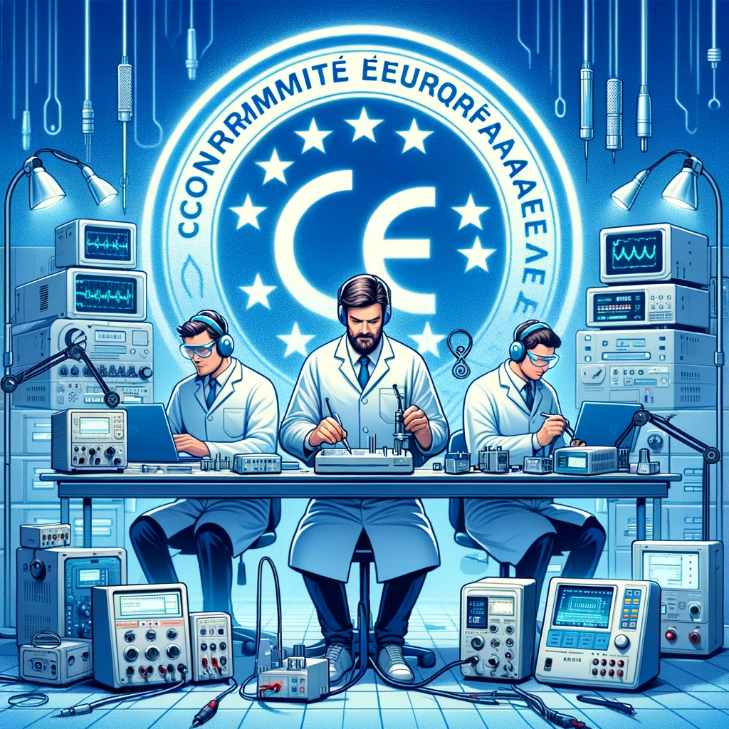Pathway to Approval: CE Certification Essentials
I. Introduction
A. Importance of CE Certification in Global Trade and Product Compliance
CE Certification is pivotal in global trade, ensuring products meet EU standards for safety and quality. It facilitates market access within the European Economic Area (EEA), essential for expanding international business and competing effectively in diverse markets. Manufacturers rely on CE Certification to demonstrate conformity with stringent EU regulations, enhancing their credibility and enabling seamless product distribution across member states.
B. Overview of What CE Certification Entails and Its Significance for Manufacturers
CE Certification involves comprehensive assessment of product conformity with EU directives. It includes rigorous testing and documentation processes to demonstrate compliance. For manufacturers, CE Certification signifies commitment to quality and safety standards, bolstering consumer trust and enabling market growth opportunities across Europe and beyond. This certification process also streamlines regulatory compliance efforts, reducing risks associated with non-compliance and ensuring seamless product circulation in the EEA market.
II. Understanding CE Certification
A. Definition and Background of CE Certification
CE Certification signifies compliance with EU health, safety, and environmental protection standards. It allows products to circulate freely within the European Economic Area (EEA) and indicates adherence to specific directives relevant to product categories.
B. Key Objectives and Benefits of Obtaining CE Certification
The primary objective of CE Certification is to ensure that products placed on the EEA market meet essential health, safety, and environmental requirements. Benefits include enhanced market access, improved product credibility, and increased consumer confidence due to rigorous conformity assessment procedures.
C. Comparison with Other Global Certification Standards
Compared to other global certification standards, CE Certification stands out for its mandatory nature within the EEA. Unlike voluntary certifications, CE marking is a legal requirement for many product categories, emphasizing compliance with EU directives and facilitating international trade across member states.
III. The CE Marking Process
A. Initial Steps: Determining Applicable Directives and Standards
The CE marking process begins with identifying the specific EU directives and standards applicable to the product category. This involves understanding the scope of regulations that govern the product’s intended use and potential risks.
B. Conformity Assessment Procedures: Self-Certification vs. Involvement of Notified Bodies
Depending on the product’s classification and associated risks, manufacturers may choose between self-certification or engaging a Notified Body. Self-certification requires conducting internal conformity assessments according to applicable standards, while Notified Bodies are authorized entities that verify product compliance through independent testing and evaluation.
C. Documentation Requirements and Technical File Preparation
CE Certification necessitates comprehensive documentation to demonstrate conformity with EU requirements. Manufacturers must compile a technical file containing essential documents such as design specifications, risk assessments, test reports, and the CE Declaration of Conformity. These documents serve as evidence of compliance during regulatory inspections and audits.
IV. CE Certification Directives and Regulations
A. Overview of Major CE Directives
CE Certification involves adherence to specific directives tailored to different product categories within the EU market. Examples include the Machinery Directive, which focuses on the safety of machinery and equipment, and the Medical Devices Directive, which regulates the safety and performance of medical devices.
B. Specific Requirements and Compliance Criteria for Different Product Categories
Each CE directive outlines unique requirements and compliance criteria relevant to its respective product category. For instance, the Machinery Directive mandates conformity with essential health and safety requirements related to machinery design, construction, and operation. Similarly, the Medical Devices Directive stipulates rigorous assessment of device safety, performance, and usability to ensure patient and user protection.
V. Benefits of CE Certification
A. Market Access in the European Economic Area (EEA) and Beyond
CE Certification grants products unrestricted access to the European Economic Area (EEA), comprising the EU member states and additional countries participating in the single market. This facilitates seamless trade and distribution within a large consumer market, enhancing business opportunities and market penetration.
B. Enhanced Product Credibility, Safety, and Consumer Confidence
Achieving CE Certification signifies compliance with stringent EU health, safety, and environmental protection standards. It assures consumers that products meet essential requirements for performance, reliability, and safety, thereby enhancing product credibility and fostering consumer trust and confidence.
C. Cost-Efficiency Through Streamlined Compliance and Reduced Trade Barriers
CE Certification streamlines regulatory compliance by harmonizing standards across the EEA. This reduces the need for multiple certifications and testing processes, resulting in cost savings for manufacturers. Moreover, it minimizes trade barriers by eliminating technical barriers to trade within the single market, promoting efficient product circulation and market competitiveness.
VI. Challenges in Achieving CE Certification
A. Common Obstacles Faced by Manufacturers During the Certification Process
Manufacturers often encounter challenges such as navigating complex regulatory requirements, determining applicable directives, conducting comprehensive conformity assessments, and managing documentation requirements effectively. Lack of internal expertise, resource constraints, and the need for extensive testing can also pose significant obstacles.
B. Strategies for Overcoming Technical and Regulatory Hurdles
To overcome technical and regulatory hurdles, manufacturers can implement strategies such as:
- Engaging early with Notified Bodies or consultants to clarify regulatory requirements and ensure proper interpretation.
- Conducting thorough gap analyses and risk assessments to identify and address compliance gaps proactively.
- Investing in employee training and development to enhance internal capabilities in regulatory compliance and technical documentation.
- Utilizing digital tools and software for documentation management and compliance tracking to streamline the certification process.
- Establishing clear communication channels with stakeholders and fostering collaborative relationships to navigate regulatory changes effectively.
C. Importance of Continuous Compliance and Updates
Continuous compliance is critical to maintaining CE Certification validity over time. Manufacturers must stay informed about evolving regulatory requirements, standards updates, and market expectations. Regularly reviewing and updating conformity assessment documentation, conducting periodic audits, and responding promptly to regulatory changes are essential to ensure ongoing compliance and market access within the EEA.
VII. CE Certification Implementation Tips
A. Best Practices for Preparing and Submitting a CE Declaration of Conformity
Preparing and submitting a CE Declaration of Conformity involves several best practices:
- Thorough Documentation: Compile comprehensive technical documentation demonstrating compliance with relevant EU directives and standards.
- Accurate Assessment: Conduct rigorous conformity assessments and testing to ensure products meet essential requirements.
- Clear Declaration: Clearly state the product’s conformity with applicable directives and include all necessary information required by EU regulations.
- Verification Process: Verify the accuracy and completeness of the declaration before submission to regulatory authorities.
- Timely Submission: Submit the CE Declaration of Conformity along with supporting documentation promptly to facilitate timely market access.
B. Integrating CE Certification into Business Strategies for Competitive Advantage
Integrating CE Certification into business strategies enhances competitive advantage:
- Market Differentiation: Use CE Certification to distinguish products as compliant with high EU standards, enhancing market credibility and customer trust.
- Access to Markets: Leverage CE Certification to access the vast EEA market without additional technical barriers, facilitating international expansion.
- Risk Mitigation: Mitigate risks associated with non-compliance by adhering to robust regulatory standards and maintaining market acceptance.
- Enhanced Reputation: Build a reputation for quality and reliability, attracting customers who prioritize product safety and compliance.
- Strategic Partnerships: Forge partnerships with suppliers, distributors, and stakeholders who value CE Certification as a mark of excellence and regulatory adherence.
VIII. Conclusion
A. Recap of the Benefits and Importance of CE Certification for Manufacturers
CE Certification plays a pivotal role in ensuring product compliance with EU standards, thereby facilitating market access within the European Economic Area (EEA). It enhances product credibility, safety, and consumer confidence, while also streamlining regulatory compliance and reducing trade barriers. Manufacturers benefit from expanded market opportunities and increased competitiveness through adherence to rigorous CE Certification requirements.
B. Final Thoughts on Navigating the Pathway to CE Certification Success
Navigating the pathway to CE Certification success requires dedication to understanding and meeting complex regulatory requirements. Manufacturers must prioritize thorough preparation, effective documentation management, and proactive compliance strategies to overcome challenges and achieve certification efficiently. By adopting best practices and leveraging expert guidance, businesses can streamline the certification process and ensure sustainable market access.
C. Call to Action for Manufacturers to Prioritize CE Certification for Market Expansion and Consumer Trust
I urge manufacturers to prioritize CE Certification as a cornerstone of their business strategy. Embracing CE Certification not only demonstrates commitment to product quality and safety but also unlocks opportunities for market expansion and enhanced consumer trust. By investing in CE Certification, manufacturers can navigate global trade complexities confidently, seize growth opportunities within the EEA market, and build lasting relationships with discerning customers who value compliance and reliability.


